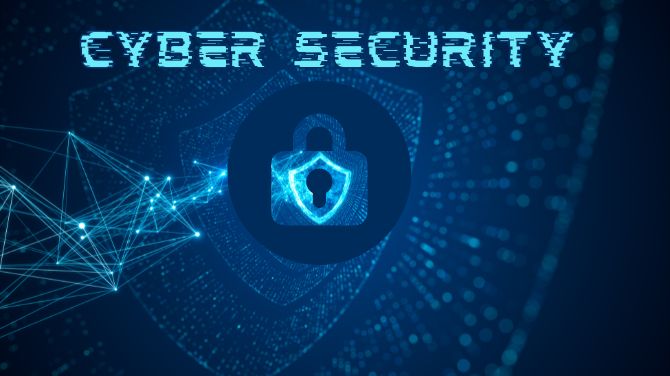Top 10 Cybersecurity Training Tools | Craw Security

Top 10 Cybersecurity Training Tools | Craw Security
Best Cybersecurity Training Tools
In this article, you will get an Introduction to Cybersecurity Training which will help you grow in the cybersecurity industry in the IT Sector. Working with such skills can help you enhance your knowledge in various aspects of Information, technology, and data protection.
Moreover, you will learn about how cybersecurity works for the better protection of our networks, systems, servers, and datasets. With this article, you will be able to observe how security measures help professionals to secure our surroundings. Let’s continue!
The Need for Cybersecurity Training
1. Rise in Cyber Threats
By using the following essential methods, cybersecurity training can lower cyber threats:
- Awareness: Training makes people and organizations more cautious by raising awareness of potential cyber dangers and the techniques attackers employ.
- Skill Development: Training equips people with the knowledge and abilities necessary to correctly identify dangers, such as
- How to Spot Phishing Emails or
- Secure Network Configurations.
- Best Practices: It disseminates information on cybersecurity best practices, which can stop vulnerabilities, like
- Consistent Software Upgrades,
- Secure Password Management, and
- Data Encryption.
- Incident Response: In order to minimize damage and stop the spread of threats, training educates how to react to cyber disasters quickly and effectively.
- Policy Compliance: It guarantees that staff members are aware of and follow security policies and procedures, minimizing the possibility of insider attacks.
- Risk Mitigation: Organizations can resolve vulnerabilities before they are actively exploited by addressing cybersecurity risks through training.
- Continuous Learning: Continuous training keeps people and businesses up to date with the most recent security trends and technologies because cyber threats grow quickly.
- Security Culture: Encouraging a culture of cybersecurity knowledge makes security a shared obligation for all stakeholders and employees.
2. The Cost of Data Breaches
There are various ways that cybersecurity training might lower the cost of data breaches:
- Early Detection and Response: Employees who have received training are more likely to spot warning signals of a data breach early, facilitating speedier containment and action.
Reducing the size of the breach can significantly lessen the cost of damage.
- Phishing Prevention: Employees can learn about phishing hazards and how to recognize phishing efforts through effective training.
Because there are fewer successful phishing attempts, there are also fewer breaches, which lowers costs.
- Proper Handling of Data: Training places a strong emphasis on safe data management and security procedures.
The likelihood of data exposure or leakage diminishes when employees adhere to these rules, potentially lowering regulatory fines and legal expenses.
- Mitigating Insider Threats: In order to detect and resolve suspicious activity from workers or contractors, firms can benefit from cybersecurity training.
This could help organizations avoid expensive breaches brought on by insiders.
- Compliance: Employee compliance with data protection requirements is ensured by training, lowering the possibility of non-compliance penalties and litigation costs.
- Incident Response Efficiency: A well-trained team can react to data breaches more quickly, reducing the duration of the breach and the expenses involved.
They can aid with the preservation of evidence for forensic investigation.
- Reduced Downtime: The loss of productivity and income that frequently follows a protracted breach can be avoided with quicker discovery and containment.
- Reputation Management: An organization’s reputational harm from a breach can be reduced when it is properly managed and aided by skilled employees.
Long-term financial losses may result from a damaged reputation.
- Insurance Premiums
With well-implemented training programs, some cybersecurity insurance carriers may provide cheaper rates to enterprises, which can result in cost savings.
- Preventative Measures
Training can assist firms in proactively implementing security measures that lower the likelihood of breaches in the first place, thereby saving expenses associated with incident response and recovery.
This is done through fostering a cybersecurity-aware culture.
Benefits of Cybersecurity Training Tools
1. Knowledge Enhancement
Tools for cybersecurity training have the following important advantages for both individuals and businesses:
- Up-to-date Information: The topic of cybersecurity is quickly developing, with new dangers and technology appearing frequently.
Moreover, the most recent information can be provided by training tools, ensuring that individuals and teams stay abreast of the constantly evolving world of cyber threats and security measures.
- Understanding Evolving Threats: Tools for training people in cybercrime tactics, methods, and procedures (TTPs) are available.
They can identify and efficiently counteract new and complex threats thanks to this knowledge.
- Technology Proficiency: The usage of security technologies and techniques is frequently covered in cybersecurity training materials.
By improving their technical skills and knowledge, participants are better able to use security solutions to safeguard their systems and data.
- Compliance Knowledge: Specific cybersecurity compliance requirements exist in several businesses.
The danger of legal problems and fines can be reduced by using training tools to inform people about these requirements and how to assure compliance.
- Risk Assessment and Management: People can learn how to successfully identify and manage cybersecurity threats with the use of training tools. This includes
- Identifying Vulnerabilities,
- Evaluating their Potential Impact, and
- Implementing Risk Mitigation Strategies.
- Best Practices: Tools for cybersecurity training frequently have an emphasis on best practices for protecting systems and data.
Participants get essential knowledge about what is effective and ineffective in the field of cybersecurity.
- Incident Response Skills: Individuals and teams can improve their knowledge through training tools to acquire excellent incident response abilities.
They get knowledge on how to recognize, contain, and mitigate cyber incidents, minimizing the harm and expense brought on by breaches.
- Crisis Management: Tools for cybersecurity training may also cover crisis management and communication in addition to technical abilities.
This information is necessary to handle the legal and public relations ramifications of a data breach, which can be just as significant as the technical response.
- Employee Awareness: The workforce of an organization can become more generally aware of cybersecurity thanks to training tools.
Employees are a more robust line of defense against cyber attacks when they are aware of the hazards that could arise and how they can help mitigate them.
- Continuous Learning: Tools for cybersecurity training can be utilized for continuing education and improvement.
This makes it possible for people and organizations to change in response to emerging dangers and technology.
2. Hands-On Practice
It is an essential advantage of cybersecurity training tools since they provide real-world experience that improves cybersecurity training in a number of ways, including
- Skill Development: Participants can put their theoretical knowledge to use in a practical setting through hands-on experience.
This aids in the development of the abilities required to carry out tasks like
- Setting Up Firewalls,
- Examining Logs, and
- Performing Vulnerability Analyses.
- Critical Thinking: Participants must develop critical thinking and problem-solving skills while participating in hands-on activities.
When responding to actual cybersecurity crises, where prompt decision-making is essential, this experience is priceless.
- Scenario-Based Learning: In order to give participants the opportunity to experience and react to simulated attacks, training tools frequently imitate real-world cyber situations.
This aids people in comprehending the strategies and methods employed by cybercriminals as well as how to defend themselves against them.
- Risk-Free Environment: With hands-on training, participants can make mistakes without worrying about the implications in the real world.
This promotes experimentation and learning from mistakes, which are crucial for developing skills.
- Confidence Building: Participants’ confidence in handling real-world scenarios increases as they gain practical experience and become more skilled at cybersecurity activities.
This assurance is essential while handling emergencies or making important security decisions.
- Team Collaboration: Group participation is encouraged in many hands-on training exercises, which fosters the collaboration and communication that are necessary for
- Efficient Incident Response and
- Teamwork in a Security Operation Center (SOC).
- Tool Familiarity: Through practical application, participants become acquainted with various cybersecurity tools and technologies.
To properly use security solutions to secure systems and networks, you must have this understanding.
- Immediate Feedback: Exercises that require hands-on participation frequently offer quick feedback, enabling participants to evaluate their performance and make real-time adjustments.
As a result, learning is hastened, and people are better able to comprehend the effects of their actions.
- Retention: When compared to passive learning techniques, active involvement through practical application often leads to improved knowledge retention.
There is a higher likelihood that participants will retain and use what they have learned.
- Realistic Scenarios: Tools for training can produce incredibly realistic scenarios that match the complexity and difficulties of real-world cyber threats.
People are more prepared for the complexity of real-world occurrences thanks to this.

3. Confidence Building
The following ways in which cybersecurity training tools are beneficial to people and businesses include:
- Skill Mastery: People improve their skills when they use training tools to simulate cybersecurity scenarios and procedures.
Their confidence in their capacity to successfully address security concerns is bolstered by this mastery.
- Real-World Experience: Training tools simulate and conduct practical exercises that mirror real-world cyber scenarios.
As they gain experience handling real-world cybersecurity problems, participants’ confidence grows as they successfully navigate these scenarios.
- Risk-Free Learning: Training tools offer a secure setting for making mistakes and learning from them without suffering consequences in the real world.
This risk-free education enables people to
- Take the Initiative,
- Try New Things, and
- Gain Confidence in their Ability to Make Decisions.
- Scenario Repetition: Participants can frequently repeat scenarios and exercises using training tools. Individuals can improve their abilities and tactics via repetition, boosting their confidence with each attempt.
- Immediate Feedback: Many training tools provide real-time performance feedback. This feedback strengthens good behavior and enables people to quickly fix mistakes, which fosters a greater sense of competence.
- Complex Problem-Solving: Tools for cybersecurity training frequently present challenging and complex scenarios. Successfully resolving these issues increases one’s self-assurance in one’s capacity for problem-solving and flexibility in many contexts.
- Team Collaboration: Participants gain teamwork skills through collaborative training scenarios. Their confidence in joint cybersecurity efforts is increased when they collaborate effectively and accomplish shared objectives.
- Tool Proficiency: Participants are introduced to various cybersecurity technologies and tools through training tools.
Learning how to use these technologies effectively gives users confidence in their capacity to use technology to protect systems and data.
- Response Preparedness: People are better equipped to respond to cybersecurity events after receiving training. When confronted with unforeseen security issues, their confidence is boosted by this readiness.
- Security Awareness: Participants become more aware of potential risks as they learn about cybersecurity threats and best practices.
With this knowledge, they are more equipped to
- Make Security Decisions and
- Experience Greater Online Security.
- Certification Attainment: Numerous cybersecurity training courses result in certifications that are accepted by the industry.
Obtaining these certificates not only demonstrates skill but also increases one’s self-assurance in one’s educational background and marketability in the industry.
- Continuous Learning: People gain confidence over time as they routinely use cybersecurity training tools. They become more receptive to new dangers and technologies because they are confident they know how to remain relevant.
Top 10 Cybersecurity Training Tools
| S.No. | Tools | Explanation |
| 1. | Immersive Labs | A cybersecurity training platform called Immersive Laboratories provides hands-on, gamified cybersecurity activities and laboratories to assist people and teams in developing and testing their cybersecurity abilities in a real-world setting. |
| 2. | Hack The Box | Hack The Box is an online platform and community that offers cybersecurity experts and enthusiasts a virtual playground to hone their ethical hacking abilities on a variety of practical problems and open systems. |
| 3. | Cybrary | A variety of both free and paid cybersecurity courses are available through Cybrary, including
a) Hands-on Labs and b) Certification Preparation. |
| 4. | Pluralsight Security Courses | There are several IT and cybersecurity courses available on Pluralsight, including courses on
a) Ethical Hacking, b) Penetration Testing, and c) Security Awareness Training. |
| 5. | CTF365 | A cybersecurity training platform called CTF365 (Capture The Flag 365) offers teams and individuals a continuous, gamified environment where they may practice and develop their cybersecurity abilities through practical challenges and simulations. |
| 6. | Codebashing | A cybersecurity teaching platform called Codebashing provides interactive, practical training modules on secure coding techniques and application security.
My understanding is based on data up to September 2021. Therefore, Codebashing’s accessibility or legal status may have changed since then. |
| 7. | Cyber Aces | A cybersecurity education initiative called Cyber Aces provides online lessons and contests to teach people the fundamentals of cybersecurity, including subjects like
a) Network Security, b) Operating Systems, and c) Web Application Security. |
| 8. | Sans Cyber Aces | The comprehensive cybersecurity training and certification programs offered by SANS, which cover a wide range of subjects and skill levels, are well-known. |
| 9. | OWASP WebGoat | For practical teaching in online application security, WebGoat is a purposefully unsafe web application. |
| 10. | TryHackMe | With virtual laboratories, CTFs (Capture The Flag challenges), and guided learning routes, TryHackMe offers a gamified approach to cybersecurity training. |
Choosing the Right Tool for Your Needs
The most costly or well-liked tool isn’t always the greatest tool. What suits your needs is what matters. Consider:
- Your Needs and Goals
Do you wish to go deeply into a certain expertise, or are you seeking something more fundamental? Establish your objectives first.
- Budget Constraints
Some tools provide trials or free versions. Start there and see whether they fit your criteria.
- Level of Expertise
Avoid jumping into the deep end if you can’t swim. Pick a platform that corresponds to your current level of expertise.
Conclusion
In this article, we learned about how cybersecurity training tools can help you secure your essential digital assets against online threats that can raise more cyberattack cases. Now, if you really want to learn how to use cybersecurity tools, you can join the “1 Year Diploma Course in Cyber Security Training in Delhi” offered by Craw Security for IT Professionals who want to enhance their knowledge in the field of cybersecurity and the IT Sector.
Moreover, you will get the chance to learn under the guidance of professional cybersecurity experts. What are you waiting for? Contact, Now!
Frequently Asked Questions
About the Top 10 Cybersecurity Training Tools
- Why is cybersecurity training essential?
Training in cybersecurity is crucial for a number of reasons:
- Protection Against Cyber Threats,
- Data Security,
- Compliance,
- Risk Management,
- Incident Response,
- Employee Awareness,
- Technological Advancements,
- Reduced Downtime,
- Protection of Reputation,
- Competitive Advantage,
- Cybersecurity Workforce Development, and
- Personal Security.
2. Are these training tools suitable for beginners?
Yes, a lot of cybersecurity training resources are appropriate for new users. These tools frequently include a selection of training programs and resources catered to various ability levels, including beginners.
Here’s why they’re appropriate:
- Structured Learning Paths,
- Basic to Advanced Courses,
- Hands-On Labs,
- Interactive Tutorials,
- Progress Tracking,
- Community Support,
- Free Resources,
- Certification Preparation,
- Flexibility, and
- Safe Learning Environment.
3. Is it legal to practice hacking on these platforms?
Cybersecurity platforms’ terms of service, your intent, and local laws and regulations all play a role in determining whether it is lawful to practice hacking on them. Here are some crucial factors to remember:
- Platform Policies,
- Authorized Testing,
- Intent,
- Ownership,
- Local Laws & Regulations,
- Ethical Guidelines, and
4. Do I need prior knowledge to use these tools?
Depending on the particular tool and its complexity, different levels of prior knowledge may be required to utilize cybersecurity tools.
While some cybersecurity solutions are simple to use and don’t require any prior expertise, others are more complex and might be more appropriate for seasoned professionals.
Therefore, the appropriate tool makes a difference in the answer.
5. How often should I train to stay updated?
Regular training and learning activities are advised to stay current in the realm of cybersecurity.
In order to achieve continual learning, many professionals engage in daily or weekly activities like
- Reading Industry News,
- Blogs,
- Research Papers,
- Taking occasional courses, or
- Attending conferences.
Depending on the precise frequency can change
- Your Goals,
- Available Time, and
- The rapidly evolving nature of cybersecurity.


















